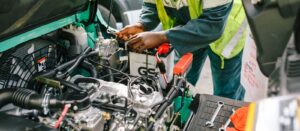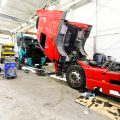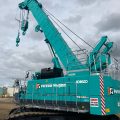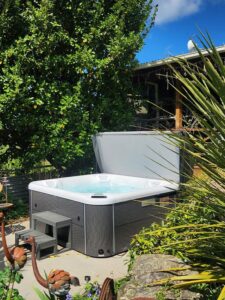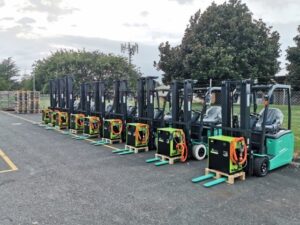Forklifts are indispensable tools in New Zealand’s bustling industries, from logistics and manufacturing to construction and agriculture.
These hardworking machines rely on a complex interplay of components to function efficiently and safely.
Using high-quality forklift parts is essential to maintain productivity, minimise downtime, and ensure the safety of operators and those working nearby.
Understanding Forklift Parts
Core Forklift Parts
Forks
The business end of the forklift, forks are crucial for lifting and transporting loads. They come in various types, including standard, full-free, and tapered, each designed for specific applications. Fork materials typically include steel or cast iron, with the choice depending on load capacity and working conditions. Regular inspection for cracks, bending, and wear is essential to prevent accidents.
Mast
The mast is the vertical structure that raises and lowers the forks. It consists of mast channels, hydraulic cylinders, and chains. Smooth operation and safe lifting depend on proper maintenance, including regular lubrication and alignment checks. Common issues include hydraulic leaks, chain wear, and misalignment.
Hydraulic System
The hydraulic system powers the forklift’s movements, including lifting, lowering, tilting, and steering. Key components are the pump, valves, hoses, and cylinders. Regular fluid checks, hose inspections, and leak detection are vital for preventing breakdowns and ensuring optimal performance.
Tires
Forklift tires endure harsh conditions, requiring careful selection and maintenance. Solid, pneumatic, and cushion tires are common options, each with its advantages and disadvantages. Proper tire pressure, tread depth, and regular inspections are crucial for safety and handling.
Forklift Engine and Drivetrain Parts
Engine Components
The forklift’s engine, whether diesel or petrol, requires regular attention. Key components include spark plugs, filters, belts, hoses, and injectors.
Regular servicing, replacement of worn parts, and adherence to maintenance schedules are essential for engine longevity and performance.
Drivetrain Components
The drivetrain transfers power from the engine to the wheels. Axles, differentials, and transmissions are core components.
Regular inspections for leaks, unusual noises, and excessive wear are crucial for preventing breakdowns and maintaining smooth operation.
Forklift Electrical System Parts
Batteries
Forklifts primarily rely on lead-acid batteries, which require careful maintenance for optimal performance and lifespan. Regular charging, watering (for flooded batteries), and checking battery levels are essential. Understanding battery capacity and charging cycles helps maximise battery life and minimise downtime.
Chargers
Forklift chargers come in various types, including conventional, fast, and opportunity chargers. Choosing the right charger for your battery is crucial to prevent damage and optimise charging time. Regular maintenance, including cleaning and ventilation, is essential for charger longevity.
Finding the Right Forklift Parts
The Importance of OEM Forklift Parts
Benefits of OEM Parts
Original Equipment Manufacturer (OEM) parts are specifically designed for your forklift model, ensuring optimal fit, performance, and safety. They often come with warranties and guarantees, providing peace of mind.
Risks of Aftermarket Parts
While aftermarket forklift parts may be cheaper, they can compromise your forklift’s performance, safety, and lifespan. Compatibility issues, lower quality materials, and potential safety risks are common concerns.
Finding Reliable Forklift Parts Suppliers in New Zealand
Tips for Finding Reputable Suppliers
When searching for forklift parts suppliers in New Zealand, look for businesses with a strong reputation, extensive experience in the industry, and a wide range of parts. Check online reviews, seek recommendations, and compare prices and services.
Importance of Warranty and After-Sales Service
A reliable forklift parts supplier will offer warranties on their products and provide excellent after-sales service. This includes technical support, troubleshooting assistance, and prompt delivery.
Online vs. Brick-and-Mortar
Advantages and Disadvantages of Buying Forklift Parts Online
Buying forklift parts online offers convenience, a wider selection, and often competitive prices. However, it can be challenging to assess product quality and rely solely on product descriptions and images.
Factors to Consider When Choosing a Purchase Channel
When deciding between buying forklift parts online or from a brick-and-mortar store, consider factors such as product availability, price, delivery time, warranty, return policy, and the need for expert advice.
Regular Inspection and Maintenance
Importance of a Maintenance Schedule
Implementing a regular maintenance schedule for your forklift is crucial for preventing breakdowns, extending the life of components, and ensuring operator safety.
Common Signs of Wear and Tear
Be on the lookout for signs of wear and tear, such as cracks, leaks, excessive vibration, unusual noises, and decreased performance. Addressing these issues promptly can prevent more serious problems.
Replacing Forklift Parts
DIY vs. Professional Repairs
While some forklift parts can be replaced by DIY enthusiasts with the necessary skills and tools, complex repairs should be left to qualified technicians.
Safety Considerations When Replacing Parts
Safety is paramount when working on forklift parts. Use appropriate personal protective equipment, follow manufacturer guidelines, and consult the forklift manual for specific instructions.
Tips for Extending the Life of Forklift Parts
Proper maintenance, regular inspections, avoiding overloading, and using high-quality parts can significantly extend the life of your forklift components.
Forklift parts are essential for the efficient and safe operation of these vital machines. By understanding the different types of forklift parts, their functions, and the importance of using high-quality components, you can contribute to a safer and more productive workplace.
When purchasing forklift parts, consider factors such as OEM vs. aftermarket, supplier reputation, and warranty coverage. Regular maintenance and inspections are key to extending the life of your forklift and preventing costly breakdowns.
Remember, seeking professional advice when needed can help ensure the optimal performance and longevity of your equipment.

